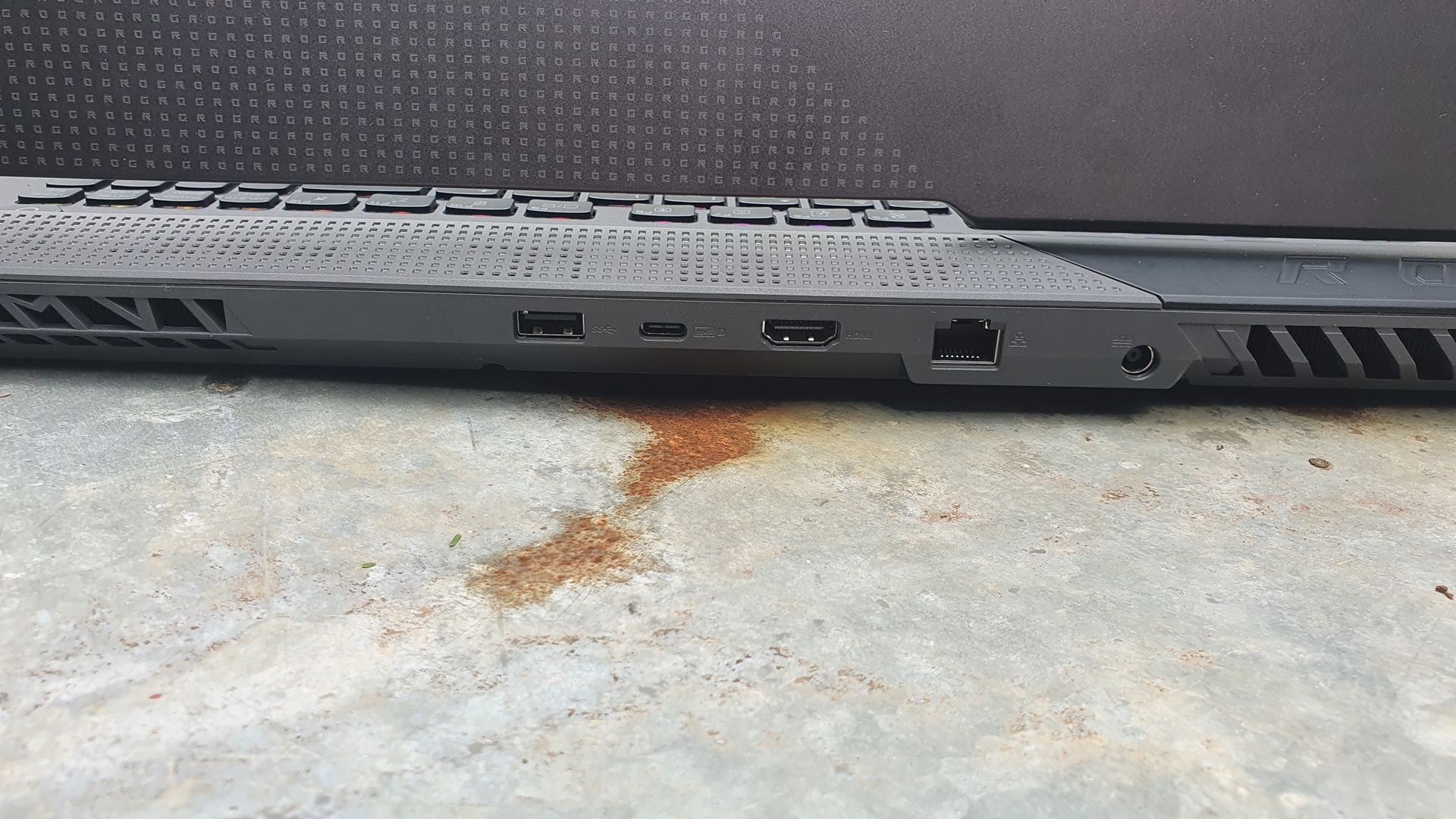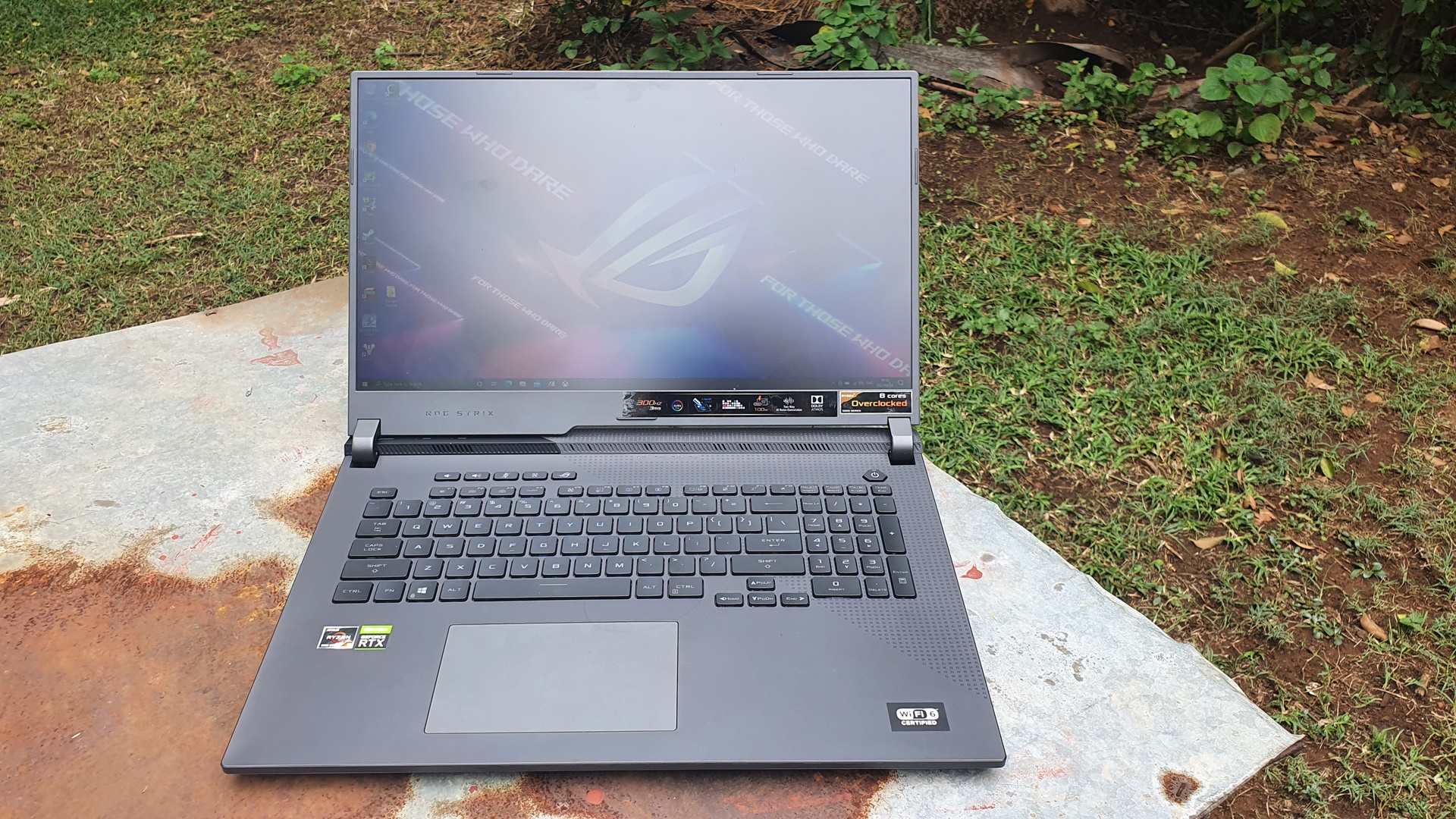Getting your hands on an Nvidia RTX 30-series GPU is tough unless you have an army of bots at your beck and call.
There is, however, one way to get your hands on Nvidia’s latest graphics tech – with a notebook.
Sure, these GPUs aren’t as beefy (nor as power hungry) as the desktop GPUs, but the performance in gaming really is spectacular and we have a notebook running one of these GPUs in for review right now.
That notebook is the ASUS ROG Strix G17 G713QR and while the tech inside the notebook makes a lot of sense, the display confuses us.
Let’s explain.
AMD Inside
The heart and soul of the Strix G713QR is an AMD Ryzen 9 5900HX running at a tasty 3.3GHz. This is paired with 16GB of DDR4 memory running at 3200MHz and while we would’ve liked a bit more memory, but 16GB is fine for most games and if you really need more you can remove the backplate and swap out the SODIMM sticks.
The GPU is not a Max-Q iteration as far as we can tell.
From the data we gleaned through GPU-Z we discovered that this Nvidia GeForce RTX 3070 8GB GPU is a 115W variety that has a base clock of 1 100MHz, a boost clock of 1 560MHz and a memory clock of 1 750MHz. While some of our gaming tests did push the base and boost clocks to 1 210MHz and 1 660MHz respectively, this was only for a few seconds before returning to the original numbers we outlined above.
In terms of temperatures we noted a max of 81.5 degrees Celsius on the CPU under a gaming load while the GPU clocked in at 86 degrees. However, a reading from the hotspot of the GPU registered at 96 degrees. At idle, temperatures were about 10 degrees Celsius above ambient temperature.
While temperatures are rather high, this is a notebook after all and we must commend ASUS on its cooling in the Strix G713QR. When the fans ramp up the notebook gets loud but if you crank up the volume of the speakers to 80 percent or higher, you can’t hear that fan noise.
But all of this means nothing without some real-world performance numbers right?

Performance
Let’s start with the Ryzen 9 5900HX.
ASUS proudly claims that the octa-core CPU is overclocked and it is. Under heavy load we noted a max frequency of 4.0GHz, in a notebook.
The downside is that your temperature will hit 100 degrees Celsius when you’re using 100 percent of the CPU.
Using old faithful Cinebench to test the raw horsepower of the CPU, our jaw dropped.
The CPU is able to complete a render test in 62 seconds, meaning that in the 10 minute long benchmark we were able to complete 10 passes of the benchmark. We earned a score of 12 186 during the Single Core benchmark.
It’s really rather good.
As for the GPU, it fared admirably in our testing but we need to go on a bit of a tangent here.
ASUS has opted to fit this notebook with a 1920 x 1080p 300Hz display which sounds cool (it was the reason we said yes to reviewing this notebook) but the truth of the matter is that you will have to make sacrifices to fidelity in order to reach that frame rate.
For example, in Shadow of the Tomb Raider, a three year old game, our average frame rate sat at 132fps on the highest preset. In a newer game, F1 2020, this average slipped even further to 95fps once again at the highest preset.
So what quality should you run to hit that 300Hz mark? The lowest setting possible in our experience and even at 17inches, it’s not a great way to play games.
Make no mistake the display is good if you want to get a bit of gaming in during your lunch break at work or while you’re on holiday, but for the most part you will want to run an external monitor.
Okay, tangent complete.
We only have one game that lets us test RTX and that game is Shadow of the Tomb Raider.
As you’ll see in the graphs below, RTX does cut your performance by around 40 percent, but the improvement in lighting is something we feel makes that sacrifice worth it.
All in all, the Strix handles gaming in the newest titles at the highest settings well. The display is just odd to us.
Battery life
The Strix houses a 90Wh battery that should get you roughly two hours of gaming (depending on settings) when loadshedding hits or you aren’t near mains power. The good news is that games are still playable until you hit the 20 percent mark and then performance takes a nose dive.
If you aren’t gaming but are streaming video you can expect between nine and 10 hours of battery life.
For work, however, you should expect that number to be between four to six hours of juice before the battery needs a recharge.
Bloatware
The ROG Strix comes with a bit of software pre-installed. This includes things we don’t mind such as AURA Sync and Armory Crate which allow you to easily adjust the lighting of your notebook and fan curves.
What we dislike however is the pre-installation of McAfee.
Yes, everybody needs a security suite, but McAfee is not it. The software regularly interrupted our benchmarking and its constant pleas to purchase a license sent it straight to no man’s land for us.
Aside from that gripe, however, there’s nothing especially notable as regards bloatware.

Conclusion
It is very difficult to fault the ROG Strix G71, but not impossible. The GPU performs very well and the CPU is a beast that can handle most tasks you chuck in its direction.
However, the decision to opt for a 300Hz display in this notebook makes no sense to us.
You can hit that frame rate with a bit of graphic setting tweaking but why would you want to? For one, the display is small at 17inches and coming from a 32inch or even 27inch monitor, this is a little display. You also have to ask yourself whether you need 300Hz. For most people we’d argue this framerate is extreme unless you are playing esports where every frame counts. All of that having been said for gaming on the go, however, it gets the job done and the image quality is superb.
Unfortunately this display also bumps up the price of this notebook to R48 000 which is a lot of money. That having been said, if you can find this configuration without the 300Hz display pricing starts at R37 000 which is about what we’re comfortable spending for a notebook with these specs.
Where this notebook impressed us however was in how loud – or rather how quiet it was under load. Sure, the fans can be heard as they ramp up but it’s nowhere near as jarring as our daily driver, an Acer Predator Triton 300. Even after many hours of testing the keyboard was never uncomfortable to the touch.
While the display is confusing there is no denying that the ASUS ROG Strix G17 G713QR is a great gaming notebook and if you’re really itching to get your hands on next-gen graphics, we’re comfortable recommending this notebook as an avenue to reach that.
Disclaimer: The ASUS ROG Strix G713QR was sent to Hypertext for the purpose of a review by ASUS South Africa. The notebook has been sanitised and returned to ASUS South Africa.



